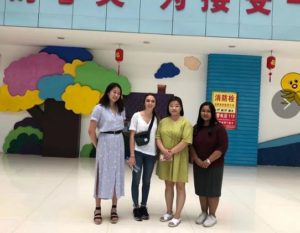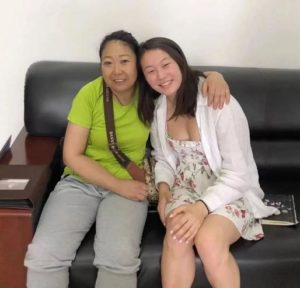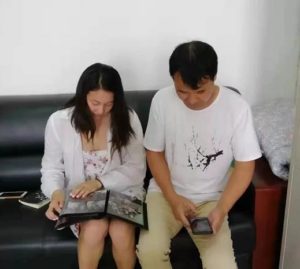Volunteer Journal: Trip to Jiaozuo Children’s Welfare Home
China has experienced enormous changes in the last 18 years. It is a country which continues to modernize and develop at an incredible pace. Since I lived there just 18 years ago, the Jiaozuo Children’s Welfare Home has reaped many of these sweeping benefits.
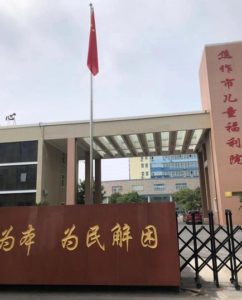
Founder and CEO of United Family Healthcare (UFH), Roberta Lipson, noted that the extremely rough conditions at the Jiaozuo orphanage was the inspiration for creating United Foundation for China’s Health (UFCH), the corporate social responsibility arm of UFH, in 2001. Hailing from the Jiaozuo orphanage, I myself was a beneficiary of UFCH services and support less than two decades ago when the Foundation was just beginning. As discovered on a recent UFCH trip back to Jiaozuo, conditions at the orphanage have improved tremendously since my brief time there as a baby. Long gone are the dirt floors, malnourished, and underserved children.
Due to the vast improvements at the orphanage, largely through an increase in government funding, UFCH had not returned to Jiaozuo since late 2017. In the early morning of Thursday July 18, 2019 a team of three, two volunteers including myself, and Nahar Shamsun of UFCH, set off from Beijing West Train Station and journeyed to Henan Province in order to assess the needs and conditions of the Jiaozuo Children’s Welfare Home and enable me to reconnect with my first home.
What we found was an impressive operation. Since my time there the orphanage had upgraded to a new facility. The new building, which was made specifically for the welfare home, was spacious, clean, and organized. Upon arrival, after making it past the security gate, we were immediately greeted by the facility’s director, Guo Yu Ping, and led into a large conference room immediately off of the building’s entrance. Director Guo explained to us that this home, which serves all of the orphans in Jiaozuo, a city of over 3 million, can accommodate as many as 400 children and employs a staff of 90 including caregivers, nurses, and teachers. Currently, 160 children from babies to teenagers live in the orphanage, all of which have serious medical conditions, one of the most common being cerebral palsy. These children, which have been abandoned on city streets or in front of the orphanage, are provided with rehabilitation and other medical services at the welfare home and at the local hospital paid for by the Chinese government. Each child receives 1200 RMB in social welfare payments per month. All of the children receive their vaccinations and small children are given formula until they are three years old. These are incredible improvements to a system which was, until relatively recently, extremely poor and underserved.
Just 4 years ago the orphanage received hundreds of new children and was responsible for nearly 300 kids, but the changes in China have drastically lowered the rate of kids being brought to the orphanage. Now it mostly receives children with very serious chronic medical conditions. Last year the orphanage received just 19 new children. As Director Guo explained, these children are unlikely to ever be adopted due to their conditions. When they turn 18, these children are transferred to the adult social welfare home in Jiaozuo. Last year, twelve children were adopted, but this year only one has been adopted so far. As Director Guo explained to us, most of the children now living in the welfare home have no hope of adoption.
Director Guo led us on a tour of the first few floors of the orphange which are comprised of rehabilitation facilities, classrooms, playrooms, and cribs for the younger children. Children’s art lined the walls and cheerful colors dominated the big space. A large monitor in the main office showed CCTV security monitors in every room of the building. The physical set up of the building and its rehabilitation and medical services, what Director Guo described as its “hardware” was impressive and clearly met the needs of all of the children in the home’s care. However, as Director Guo also noted, the facilities “software,” its nurses and caregivers and program needs were still not being completely met.
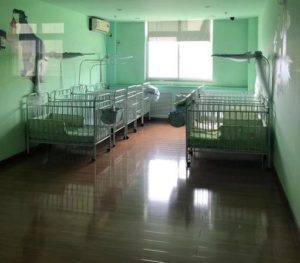
During our tour my attention was drawn to the many half empty rooms we passed in which just a few small children occupied the many available cribs. Most of them were laying down with vacant expressions on their faces. And while there was a watchful caregiver not too far away in every case, the children were nonetheless unstimulated. It was clear from looking at these children that these were very sick and disabled and my heart felt heavy with the knowledge of the conditions of their lives, hours a day confined to a crib with little hope of adoption. Despite this, there were many children being actively engaged by their caregivers and teachers. We witnessed children drawing, eating, and playing. We also witnessed many college student volunteers playing with and teaching the children.
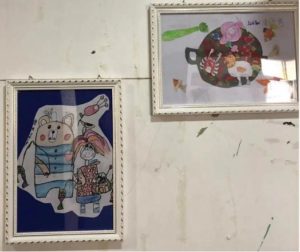
After the tour was over we took pictures and reconvened in the conference room for some final thoughts and questions. Then I was told that an ayi, the nanny who remembered taking care of me when I was a baby, would be coming in the next day to meet with me. As I was told I was one of just a few adopted children to return to the orphanage, and the oldest by almost ten years. Most of the staff who worked there 18 years ago had already retired.
When I returned alone the next day the experience I had was nearly surreal. Upon planning my trip, I had not expected to be fortunate enough to meet with someone who had cared for me. When the ayi arrived I learned that her name was Wang Su Hua. She had a kind face, deeply expressive eyes, and a timidly excited smile. She brought with her a huge grocery bag filled with 15 giant peaches she had bought for me. I was incredibly touched. The whole experience was a whirlwind of emotion. What do you say to somebody to whom you owe 11 months of good care but whom you also don’t remember. I decided on “thank you”. This was an experience I will never forget.
Overall, we found the Jiaozuo Children’s Welfare Home to be well organized, clean, and safe. From what I have heard from the staff and from people who knew me as a baby, it is quite different from the place where I spent my first 11 months of life and the place that inspired the Foundation to help so many people. It has come a long way from the place that was first visited and served by UFCH in 2001 and is now quite independent and capable.
Despite this, I could not shake the sense of quiet desperation and outright gloom which this place radiated. I was simultaneously pleased by the well-kept facility which I visited and saddened by the bleak circumstances of many of its children. Before returning to Jiaozuo I did not understand the conditions which I had left behind. How could I have when I left before I was even a year old and have no memories of the place? I have always known how incredibly lucky I am for my life now and for my wonderful, loving parents, but this trip reminded me how incredibly lucky I am to be a healthy, happy, young person with a bright future full of possibility in front of me. I want nothing more in the world than for everyone be so lucky.
Thankfully for UFCH and all of the other organizations who work to support people in need, in addition to increases in government funding for these causes, conditions are improving dramatically across the board. As our mission states, UFCH “strives to improve the lives of underserved population in China, including orphans, handicapped and migrant population, through healthcare initiatives and services by using its technical expertise and experience in the country” and continues to do this important work in order to give more children a better chance at survival and a healthier, happier life. To this organization and many others, I am personally, and eternally grateful.
HEALING BRINGS HOPE
治愈承载希望

